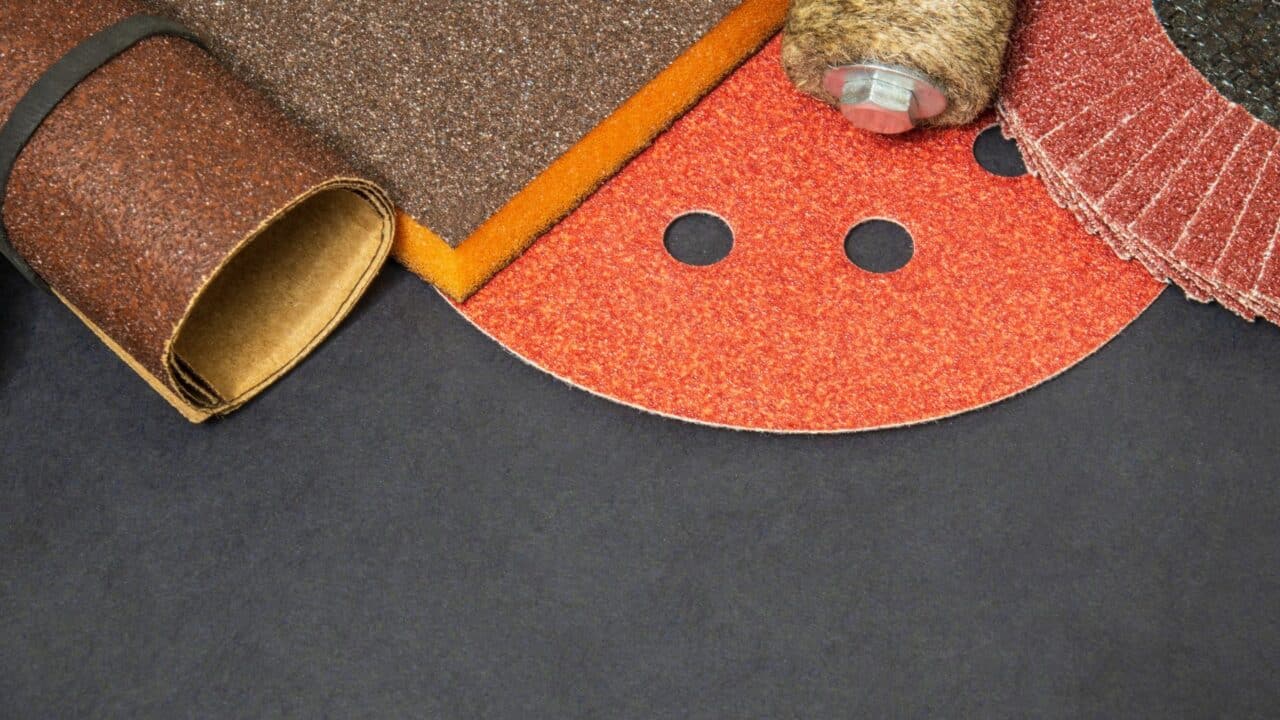For drywall repairs, start with medium grit (120–150) to knock down ridges and blend patches, then finish with fine grit (180–220) for a smooth, paint-ready surface. The right grit, tool, and technique will depend on your repair’s size, surface condition, and whether you want to minimize dust or maximize speed.
Introduction
If you’ve ever patched drywall only to have the repair show through your paint, you’ve probably learned the hard way that sanding matters as much as, if not more than the mudding. Using the wrong grit sandpaper — or the wrong tool — can leave scratches, uneven spots, or even ruin the surrounding surface.
In this guide, we’ll cover:
-
How sandpaper grits work and which to use for drywall
-
The pros and cons of sanding blocks, poles, and power sanders
-
How to match your sanding method to the repair job
-
Tips for dust control and a flawless finish
Whether you’re feathering out a small nail pop repair or leveling a full seam, you’ll walk away knowing exactly which sanding approach to use.
Understanding Sandpaper Grit Numbers
Sandpaper is graded by grit number — the higher the number, the finer the abrasive.
Coarse Grit (40–80)
-
Not for drywall repairs — too aggressive and will tear paper facing.
-
Only use on framing, wood trim, or removing heavy material outside drywall work.
Medium Grit (100–150)
-
Workhorse for drywall sanding.
-
Perfect for knocking down high spots, smoothing taped seams, and blending joint compound.
-
Common choice for the first sanding pass after mud dries.
Fine Grit (180–220)
-
Used for final smoothing before priming.
-
Removes any scratch patterns left from medium grit.
-
Best for repairs in high-visibility areas or smooth paint finishes.
Drywall Sandpaper Types
Garnet Paper
-
Soft, fine cuts. Wears quickly.
-
Good for light touch-ups, not large-scale sanding.
Aluminum Oxide
-
Durable and widely available.
-
Works for hand sanding or pole sanding.
Silicon Carbide
-
Very sharp and hard.
-
Often used in wet/dry sanding sheets.
Screen Sanding Mesh
-
Cloth-like open weave that resists clogging.
-
Great for pole sanders — dust passes through.
-
Slightly more aggressive, so be gentle on final passes.
Sanding Tools for Drywall Repairs
Hand Sanding Blocks
-
Best for: small patches, corners, detail work.
-
Keeps sandpaper flat and even.
-
Easy to control and prevents gouging.
Pole Sanders
-
Best for: ceiling seams, tall walls, wide areas.
-
Uses mesh or paper sheets.
-
Watch for “edge digging” when changing direction.
Detail Sanding Sponges
-
Flexible — conforms to curves and corners.
-
Can be used wet for dust-free smoothing.
-
Great for feathering edges without over-sanding.
Power Sanders (Drywall-Specific)
-
Best for: large-scale finishing, entire rooms.
-
Built-in dust collection when paired with a shop vac.
-
Random orbital or rotary head designs reduce swirl marks.
Choosing the Right Grit for the Job
| Repair Type | First Pass | Final Pass | Tool |
|---|---|---|---|
| Small nail/screw pop | 150 | 220 | Sanding sponge |
| Hairline crack | 150 | 220 | Hand block |
| Taped seam (1–2 coats) | 120–150 | 180–220 | Pole sander |
| Large patch area | 120 | 180–220 | Power sander or pole |
| Skim coat | 150 | 220 | Pole or power sander |
Dry vs. Wet Sanding
Dry Sanding
-
Pros: Fast, sharp cut, easy to see flaws.
-
Cons: Dust everywhere unless controlled.
Wet Sanding
-
Pros: Virtually dust-free, great for small jobs in furnished spaces.
-
Cons: Slower, less aggressive — not ideal for heavy buildup.
Pro Tips for a Perfect Sanding Job
-
Feather edges wide — don’t just sand the patch, blend it into the surrounding wall.
-
Shine a work light at an angle to spot ridges or imperfections before painting.
-
Don’t oversand — you can weaken the paper face and cause fuzzing.
-
Prime after sanding — it seals the surface and reveals hidden flaws before topcoat.
-
Use dust collection or a shop vac attachment when possible to keep the work area cleaner.
FAQ
Q: Can I use an electric sander for a small drywall patch?
Yes, but it’s usually overkill. A sanding sponge or hand block is faster and gives you more control for small spots.
Q: Should I sand between every coat of mud?
Yes — lightly sanding between coats knocks down high spots and prevents buildup, but use a fine grit so you don’t cut through to the tape.
Q: Is mesh better than regular sandpaper?
Mesh resists clogging and works well for large areas, but can be more aggressive. For delicate finish sanding, stick with regular fine-grit paper.
Q: How do I avoid dust when sanding drywall?
Use a pole sander with a mesh screen and a vacuum attachment, or opt for wet sanding with a sponge in small areas.
Q: This all seems like way too much for me to handle, can you do it for me?
If you live in the Northeast Ohio area, we would love to help with any Wall Repair and Painting needs you may have. Give us a call so we can learn more about your needs and see if we would be a good fit for your project.

